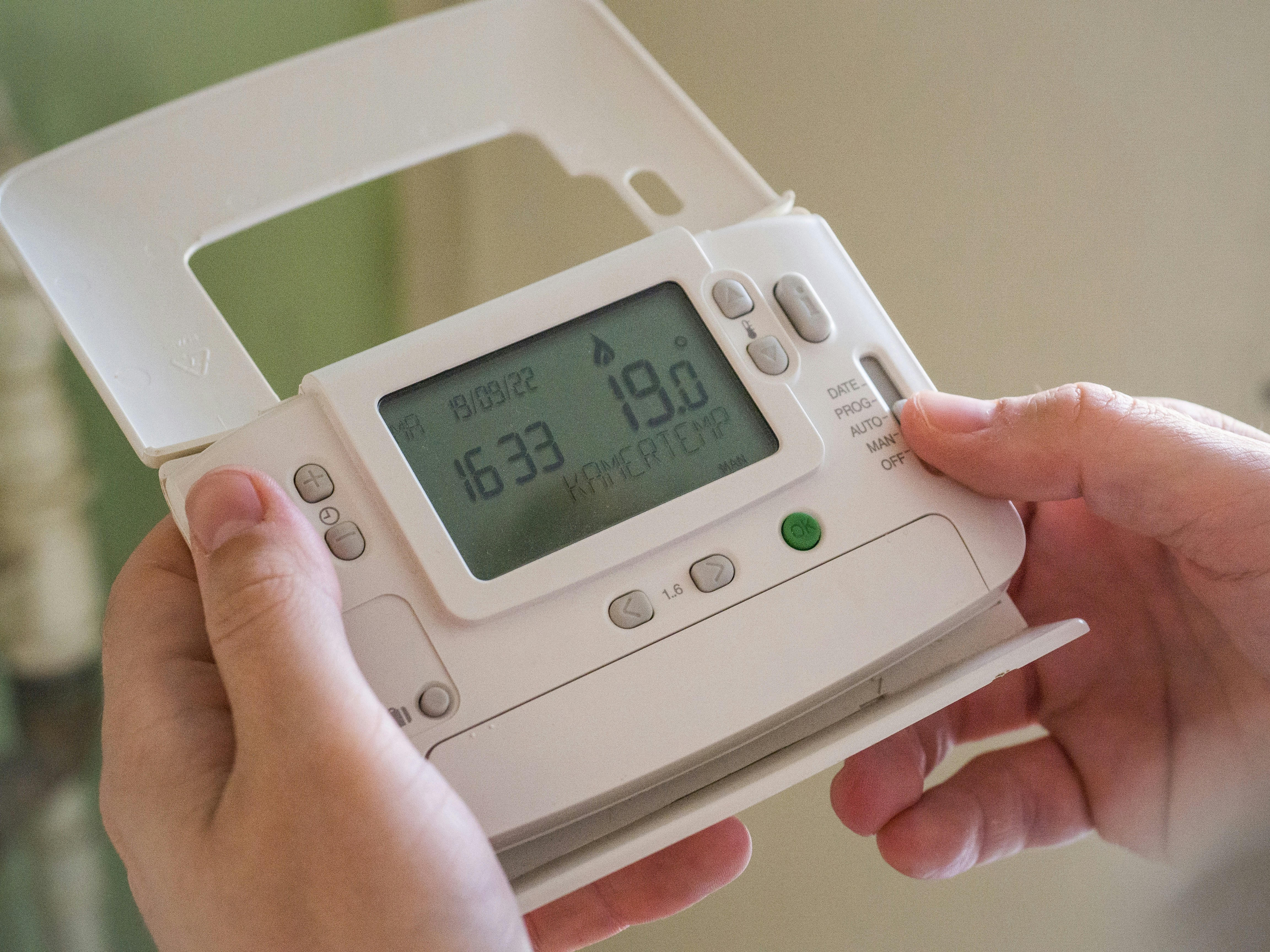These days, it feels like everything is getting a tech upgrade. Heating and cooling systems, especially in a residential context, have been reliable over the last few decades. Still, new technology, such as home automation and smart thermostats, has raised the bar in terms of energy efficiency and convenience. While you may still be on the fence, the benefits of a smart thermostat include easier temperature control, a smaller carbon footprint, and significant cost savings over time.
What is a smart thermostat?
A smart thermostat is a Wi-Fi-connected alternative to a traditional thermostat. It offers energy and cost savings and adjusts heating and cooling automatically based on the occupancy of your home.
It does this by using sensors installed in your home. Remote control adjustments via your smartphone allow homeowners to manage their home’s temperature from anywhere, meaning comfort and efficiency whenever needed. Some smart thermostats also provide detailed reports on energy usage, helping users optimize their energy consumption and ultimately reduce their carbon footprint.
What is home automation?
Home automation is the technology that lets users trigger automatic functions of home devices, usually from their smartphones. They control home devices and appliances through rules, schedules, or scenes.
Rules complete actions based on specific triggers (thermostat turns on when the front door opens, for example), and scheduled automations complete an action at a particular time. Scenes will group together your home devices that will complete an action when you trigger a scene, allowing users to control various devices with one button.
Home automation and smart thermostats: 4 major benefits
1. Temperature control you don’t have to think about
With a regular thermostat, maintaining a comfortable temperature in the room means getting up and making real-time adjustments based on your home’s current conditions. With a smart thermostat, you can program your heating and cooling to kick in based on a schedule or whether or not someone is in the house.
Start thermostats give you temperature control without having to think twice. Simply enter your home, go about your day, and trust that things will be comfortable.
2. Remote-controlled convenience for all of your needs
With home automation, you can turn your smartphone into a universal remote for lighting, door locks, and heating and cooling systems. Program things based on scenes, schedules, or rules.
Before installation, make sure that the smart thermostat or automation app you are going with is compatible with your heating and cooling system. Once you automate something simple, like lighting, you’ll want your HVAC system to follow suit rather quickly.
3. Smart thermostats pay for themselves over time
HVAC systems use almost half of the total energy used in your home. That’s a lot of energy! A smart thermostat will not only manage and program your home’s temperature but will also ensure you’re only using energy as needed.
Auto-adjusting to your schedule, occupancy, and weather saves you money by lowering your monthly energy bills. So, while swapping to a smart thermostat might be a higher upfront cost, over time, you’ll save money thanks to reduced energy bills.
4. Your home becomes much more energy-efficient
You’ll receive detailed reports on your energy usage through your smart home app, allowing you to make changes and adjust the settings to maximum efficiency. Many apps also offer recommendations to boost your consumption savings even further.
Your thermostat will likely send nudges and reminders to suggest more mild settings. It’s all about small changes that make a big difference in your carbon footprint.
Things to consider before buying your smart thermostat
There are many smart thermostat options on the market right now and choosing can be overwhelming. Before you make your selection, consider the following:
- Usability: Do the reviews cite it’s a complex system to learn?
- Voice control: Can you use voice commands to operate the system?
- Control options: Does it come with proximity and motion sensors?
- Geofencing: Can the smart thermostat trigger an action based on proximity to your home?
- Compatibility: Is the smart thermostat compatible with your HVAC system?
Final thoughts
Setting up smart home automations, including a smart thermostat, can take your heating and cooling system from basic to highly energy efficient. By installing the smart thermostat, you can enjoy remote temperature control, energy savings, and the confidence to know you are lowering your carbon footprint. Keeping your home comfortable in a more convenient way is the cherry on top.
Ready to get started with home automation or a smart thermostat? Reach out to our team today . We’re happy to walk you through your options and have the installation done in no time.

